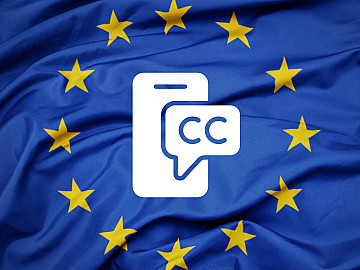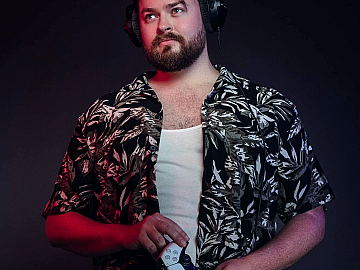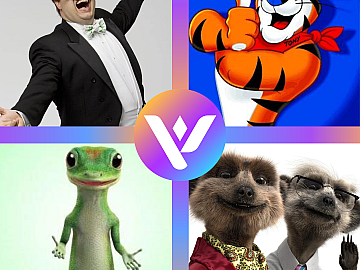The many benefits of using or creating audio-visual content may already be in your repertoire of digital marketing tactics. But are you optimizing this technique to increase website traffic to its full potential?
Consuming information visually is more engaging than reading copious amounts of text. Therefore, creating video content has become the more popular medium of sharing information online. The production aspects of creating this content can be complex and how to get the most out of this method is a question with many possible answers.
To put it simply, you want as many people to consume this media as possible. The more people who understand your inbound marketing, the more traffic will be directed to your site, and achieving this requires both localization and accessibility.
Today, we will explore the key methods of increasing website traffic using website localization so that more people can understand and enjoy your work than ever before. This is especially beneficial for using inbound marketing strategies such as promotional videos on social media, B2B content on YouTube and other platforms, as well as any media embedded on your site.
Increase Website Traffic with Localization
Video is already an essential tool in digital marketing, and 86% of businesses already use it, but is their audio-visual content reaching as many viewers as it can? The use of professional translation services will allow international viewers to understand your content. This method will exponentially increase the size of your audience on a global scale, depending on the number of languages you choose for translation.

This technique is called localization, and many global companies are beginning to catch on to its long list of benefits. In recent years, Netflix has increased its localization efforts, creating content in around 31 languages to grow its audiences worldwide. This is due to a 120% increase in the consumption of dubbed content between 2020 and 2021. This beneficial strategy can also be used for other types of businesses that involve audio-visual content, including promotional or B2B purposes. It will boost viewership with a range of options and increase website traffic to your site.
There are three main methods of translating your content:
Subtitles
The subtitling method is undoubtedly the cheaper of the first two options. Supplying your audio-visual content with foreign subtitles will allow for new global audiences who were not previously able to understand it. Subtitles are a very straightforward and effective route to growing viewership and have a fast turnaround time for those who produce vast amounts of content. Although, while incredibly beneficial, not all audiences like reading subtitles as much as listening to a dub because it requires more effort and attention.
As a bonus, Google also reads the subtitles on a video, and this is a great way to include more keywords on your site.
Dubbing
Dubbing services are when the audio in your content is re-recorded in other languages, allowing foreign audiences to listen to your project’s voice-over rather than having to read it. This is also especially helpful in low literacy areas and for audiences with visual impairments. Viewers find it more engaging than the hassle of subtitles, which allows for a more relaxed viewing experience and heightened engagement, which is usually worth the added cost.
This also allows for the same content to have multiple language versions rather than creating new content for viewers in different areas. Your inbound marketing techniques will reach more potential customers and clients with less effort and resources.
Another benefit of professional dubbing services is the option to modify content between versions. This allows for censorship changes that must be considered when releasing projects abroad and finding suitable replacements for phrases that don’t translate.
Transcripts
When you release audio-visual content which contains a significant amount of information, your viewers will find this helpful. However, keeping in mind where the data is located, rewinding and fast-forwarding to the correct points, and listening for the required information multiple times can be complex.
Offering a transcript of your content will allow those who need it to scan through information more efficiently. Some may not even watch your inbound marketing videos if they know there isn’t a transcript option for later use.
Suppose your video is for B2B or educational purposes. In that case, this option again becomes more important as viewers will likely want to go through statistics, numbers, and essential factors multiple times with no easy way to find the location of what they need unless a transcript is offered. This also allows certain pieces of information to be more easily shared between colleagues and students.
Increase Website Traffic with Accessibility
Where localization allows for new global audiences, accessibility allows for individuals within the target markets you already have to become new customers or clients. When media lacks accessibility options, certain people will not be able to consume the content, and this portion is more significant than some may assume.

Captions
The use of captions is especially helpful for those who are deaf or hard of hearing. Where subtitles translate the audio into another language, captions offer a readable version of the audio in the same language.
There are two types of captions to consider. Open captions are burned into the content so they cannot be disabled, while the more beneficial option is closed captioning, which can be turned on and off.
Unlike subtitles, captioning doesn’t only include dialogue. There will also be descriptions of other sounds in the content, including music and background noise. This allows some viewers to have a more fulfilling and engaging experience when consuming the media you provide on your website.
Sign language
This option is less common than the others on this list outside the entertainment sphere. However, it is exceptionally beneficial for deaf or hard-of-hearing viewers. Giving a sign language option in your content, whether educational, entertaining, or business orientated, will allow more people to understand it.
Internationally, around 430 million people currently have disabling hearing loss. This is over 5% of the world population, and this estimate is expected to rise to 700 million by 2050. When your content is geared towards the consumer, it is important to include this large portion of viewers who might not watch your audio-visual project without sign language translation contained in a small window of the video.
Localization and accessibility will increase viewership, whether clients or customers. The aim of the game here is to have as many people understand your audio-visual marketing techniques as possible.
This can be achieved with affordable subtitles and exceptional dubbing services for foreign audiences or captions and sign language for those who video content is generally not geared towards. Including these techniques within inbound marketing strategies will allow a greater understanding of your content and therefore increase website traffic to your site in return.
Discover Localization & Accessibility Services
Sometimes we include links to online retail stores such as Amazon. As an Amazon Associate, if you click on a link and make a
purchase, we may receive a small commission at no additional cost to you.

















